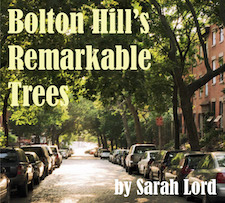 When the National Forest Service was in its infancy, Maryland hired its first state arborist, Fred Besley, who was the third state forester in the entire US. In 1906 this was still a new concept—the idea that states should care for their timber assets rather than eradicate trees that had existed on the continent for millennia.
When the National Forest Service was in its infancy, Maryland hired its first state arborist, Fred Besley, who was the third state forester in the entire US. In 1906 this was still a new concept—the idea that states should care for their timber assets rather than eradicate trees that had existed on the continent for millennia.
Besley created a tree-measuring formula that became standard throughout the nation. Citizens started working to save our biggest, oldest trees, even in the face of their industrial value.
Today, Maryland, like many states, has a Notable Tree Registry. Our Registry was developed by John Bennett and a cadre of statewide forestry boards volunteers. You can find more than 1750 notable trees in 23 counties and Baltimore City listed on the Notable Tree Registry (NB: the list is always a work-in-progress.)
Bolton Hill has two trees on the list. One is the marvelously massive English walnut, Juglans regia, in Jenkins Alley behind 1325 Bolton Street. Fred Chalfont and Ray Iturralde put me right after I misidentified this tree as a Black walnut in August’s Bulletin.
Ray and Fred are volunteers on the Baltimore City Forestry Board and are among those searching out and measuring Baltimore’s notable trees.
In contrast, Bolton Hill’s second, brand-new City champion is almost comically small. The larger of a pair of plucky live oaks—so-called because they retain their green leaves over winter—at 225 W. Lanvale Street, this is a sidewalk tree outside Sallye Perrin and John von Briesen’s house.
Quercus virginiana legendarily dominates southern cities like Savannah, Georgia. Climate change may allow these trees to survive in Baltimore.
